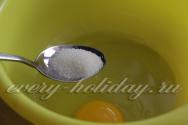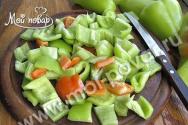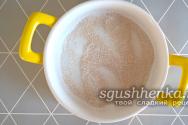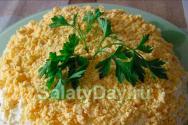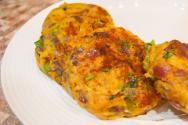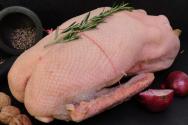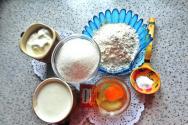How to find real, natural cream among creams? Types of dairy cream. What product is disguised as “cream”? Why are vegetable creams harmful?
Cream is sold in cans, bottles, tetrapacks, in the form of tablets and dry powders. Today, in the era of fakes and counterfeits, we are faced with the question: how to choose cream so as not to run into vegetable fats and chemicals?
Cream is essentially skimmed milk fat. The fat content is indicated on the cream for a reason: it is extremely important for the successful preparation of the dishes you have in mind. So, only high-fat cream is suitable for making whipped cream: 33% and above. Medium fat cream is good for sauces, and the lowest fat is good for hot drinks.
A few words about how to make whipped cream. Whip cream only with cold or chilled instruments. The container with cream is kept on ice during the procedure. Beating is carried out with a whisk at the lowest speed until sufficient thick cream, to which powdered sugar is then added: for 250 ml of cream - 30 g of powder.

What does quality cream look like?
To understand what we are dealing with, let's study the label. After an informative reading “Cream. Composition..." we can draw conclusions: natural cream contains exclusively cream in its composition and complies with GOST R 52091 - 2003. The presence of milk in cream is acceptable - to regulate the fat content of the product. This concludes the list of acceptable inclusions. The naturalness of the cream will also affect the shelf life of the product: real cream lasts only 4 days.
What does poor quality cream look like?
All kinds of stabilizers, imitators, flavorings and other additives, as well as vegetable fats, have nothing to do with cream. And let us immediately note that not a single “dry cream” is a natural product. Therefore, immediately eliminate from your diet all kinds of instant “coffee with cream”, as well as foamy cream in cans. The longer the shelf life, the more phosphates are added to the cream.
How to check the quality of cream
Cream is convenient because its appearance can tell almost everything about its quality. So, fresh cream is a slightly creamy, homogeneous mass. Such cream tastes pleasant, it can be a little sweet, but even a slight bitterness is a sign of spoilage. The separated cream needs to be mixed - if the homogeneity is restored, there is nothing to worry about, if there are whitish flakes, the fat does not dissolve - throw away the product without regret.
When the understanding comes that the exploitation and killing of living beings is unacceptable, the question arises of how to give up the usual food products, to which many of us have been “hooked” since childhood. Not everyone can immediately give up their favorite treats and try to replace them with something less harmful both to themselves and to the world around them. While giving up meat is often easy, giving up dairy products can sometimes be painful. Consider an alternative to dairy products such as vegetable cream. This is cream that is created on the basis of vegetable oils and in the production process of which the exploitation of animals is completely excluded.
Vegetable cream: composition
Every person, when he begins to eat consciously, develops a very useful habit: before consuming this or that product, he thoroughly studies its composition so that the process of eating does not turn into a process of self-poisoning. Therefore, first of all, let’s study the composition of this very vegetable cream. And their composition, frankly speaking, is disappointing. While reading the composition, a persistent nostalgia for school chemistry lessons arises, because of the entire composition, the only thing you can consume without harm to yourself is... water, which is listed among other ingredients. In addition to water, vegetable cream contains: sugar, hydrogenated vegetable fat, flavorings, food colors, acidity regulators (E331, E339), emulsifiers (E472, E332), stabilizers, sodium caseinate, sorbitol. Oh yes, there is also salt in there. Which is also relatively harmless, although this is a controversial issue. Thus, the product contains only two more or less adequate ingredients - water and salt. As for the rest, in particular additives with the infamous letter “E,” many questions arise.
Harm of vegetable cream
Hydrogenated vegetable fat, which is one of the main ingredients of vegetable cream, is a real toxic chemical. This fat is treated with hydrogen at high pressure and, if consumed, causes harm to the body. Hydrogenated fats are the hallmark of almost all confectionery products, and vegetable cream is no exception. First of all, hydrogenated fat increases cholesterol levels in the blood. These fats damage cell membranes, especially negatively affecting the cells of the brain and nervous system, which causes a number of serious diseases.
It has been proven that hydrogenated fat can cause the development of diseases such as diabetes, liver disease, kidney disease, heart disease, nervous system disease, and can even cause cancer. Trans fats have the ability to block the cell membrane and thus prevent it from adequate nutrition and the removal of toxins, which leads to disruption of cell function. In addition to hydrogenated fat, vegetable oil contains a number of preservatives, flavor enhancers, stabilizers, and flavoring agents, the dangers of which have already been said enough to warrant avoiding them. In a word, the naturalness and naturalness of this product, given the presence of half of the periodic table in the composition, is very, very doubtful.
What is vegetable cream made from?
Vegetable cream is made from coconut or palm kernel oils. There are different opinions about the dangers and benefits of these types of oils, but given the fact that most types of oils undergo a refining process using various chemical components and high temperatures, at which the product can change its properties and become harmful, the benefits and harmlessness of these types of oils remains in question. Also, vegetable oils, if stored improperly, tend to form various components hazardous to health.
Vegetable cream: benefits and harms
So, let's summarize. Of course, you can eat vegetable cream. But only if you are not particularly concerned about your health and are ready to sacrifice it for the sake of your food preferences. The composition of vegetable cream, to put it mildly, leaves much to be desired. However, as they say, everything is learned by comparison. And if we compare the harm of the ingredients of vegetable cream and the colossal destructive effect that dairy products bring to the body, then, undoubtedly, the choice here will be obvious: in favor of vegetable cream.

Also among the advantages of vegetable cream is the fact that it is stored many times longer than its animal counterpart, namely 4–5 times. Although the long shelf life of the product is rather a minus than a plus, since it indicates that its naturalness leaves much to be desired. Well, of course, a useful factor of this product remains the fact that the exploitation of animals is excluded in the production of vegetable cream. Whether or not to use vegetable cream is a personal choice. Of course, if the choice is between consuming cream of animal origin and consuming cream from vegetable oils, then the second option is more acceptable in terms of less harm to health and from the point of view of ethical nutrition.
Until recently, we chose cream based only on its fat content. Today, the variety of this product attracts many buyers to herin a real stupor - there are bottles on the shelves, opaquepackages, “tablets” with one dose for coffee or tea, dry bags and even cylinders.
But can all these products be called real cream? Can't find a natural cow product
Academician Ivan Petrovich Pavlov said that milk is a unique product created by nature itself. So cream is even more amazing because it can make itself. A person only needs to leave any vessel with fresh milk alone, and the process of cream production will immediately begin in it. The smallest particles of fat in the form of balls 4-5 micrometers in size, rushing through the thickness of the white liquid, float to the surface. As a result, the milk separates and heavy cream forms at the top. However, this is how the product was made in ancient times. In 1883, the Swedish scientist Gustav de Laval came up with a separator, which significantly speeded up the manufacturing process. Essentially, this is a centrifuge that accelerates milk in a circle, and as a result, milk fat, as the lightest component, accumulates near the center, and everything else tends to the periphery. Unfortunately, humanity has invented not only a separator, but also all sorts of methods for producing pseudo-cream. Therefore, today it is incredibly difficult to find a truly natural cow product on the store shelf.
Read also: Coffee: invigorates, heals and cripples
Cream of cream
Ideally, a natural cow product is called “cream”, and only one word is indicated in its composition - “cream” (for domestic ones, GOST R 52091-2003 is even preferable). However, sometimes you can find whole or low-fat milk in the list of ingredients. The question is, why make cream first and then dilute it? This is necessary in order to create a product of a certain fat content - it is called recombined. Previously, you could still find reconstituted cream, which was made from milk powder. But according to the new milk regulations, their production was prohibited. But GOST allows the use of stabilizers, which manufacturers are happy to do. These food additives are salts of citric or phosphoric (orthophosphoric) acid. They are placed in milk before separation to prevent it from curdling. If you do not want to use cream enriched with stabilizers, carefully read the composition - any additives must be indicated in the list of ingredients.
What's hidden in the can?
Reading the ingredients is also useful because from it you will find out which product is in front of you: natural dairy or vegetable, made from palm kernel oil. According to the law, the latter has no right to be called cream at all - it can be called “Whipping cream”, “Whipping mass” or something else, but, alas, manufacturers often resort to deception and write the proud word milk on their vegetable or semi-vegetable counterfeit . For example, on the shelves there are so-called “dry whipping cream” - you need to add milk to it and then beat it with a mixer. The composition of such a product speaks for itself: powdered sugar, glucose syrup, modified potato starch, hydrogenated palm kernel oil, emulsifiers E471, E472a, sodium caseinate, stabilizers: potassium phosphate, calcium phosphate, artificial cream flavor. As you can see, there is not a drop of natural cow’s milk in this product. The same can be said about the bags. instant coffee“3 in 1” - you can be sure that instead of natural dry cream, it uses a vegetable substitute. Another typical representative of a palm product is ready-made whipped “cream” in cans. True, sometimes there is still milk in them, but with a fair amount of stabilizers and other “Es”.
From raw to sterile
All cream that goes on sale must undergo heat treatment, which neutralizes milk bacteria. The only exception is a product sold on the market. By the way, raw village cream is the most “lively” and capricious. They need to be stored only in the cold and no more than a day. For the dairy industry, they are only raw materials from which they make a product for sale. They are subjected to heat treatment, and depending on this, a distinction is made between sterilized, ultra-pasteurized and pasteurized cream.
Pasteurized.
Of all the cream sold in stores, this is the most “live” and closest to a natural rustic product. They are heated moderately and briefly, and stabilizers are usually not added to them. But, since after such a mild treatment some bacteria remain alive, but inhibited, this product can not be stored for long - 4 days.
Sterilized.
This cream is heated long enough and high enough to kill all microorganisms. Therefore, to avoid milk coagulation, stabilizers are often added to it. But sterilized cream can be stored for a long time - from 1 to 6 months.
Ultra-pasteurized.
Previously, they were called UHT in English or UVT in Russian. This means processed at ultra-high temperature. Now they have decided to abandon such abbreviations, but the essence remains the same - cream is heated to a very high temperature in a short time. At the same time, they flow in a thin layer and have time to be thoroughly sterilized. In fact, this is also sterilized cream, and it may contain phosphate stabilizers. 
Fat is no joke
When choosing cream in the store, be sure to pay attention to its fat content. This figure can range from 9 to 58%, and it radically affects the culinary properties of the product. For example, to add to coffee or tea, it is best to choose 10%. Of course, you can pour thicker cream into hot drinks, but they will most likely dissolve poorly and leave behind lumps. But for whipping, on the contrary, a product with at least 30%, and even better 35-38% and higher, is more suitable . For cooking (adding to cream soup, creating purees, sauces), it is optimal to use cream of medium fat content from 15 to 30%. By the way, packages now often contain recommendations for the use of a specific product or directly indicate: for coffee, for whipping. Pay attention to this information - according to the law, it is optional, but very useful.
Believe your eyes
The appearance of cream can tell a lot about it. A good product is always a homogeneous white opaque liquid with a slight creamy tint. But if, after pouring the cream into a glass, you see that it is stratifying - a film or simply yellower particles of fat accumulate on top, then this does not mean that it has spoiled. You can carry out a very simple test for the freshness of the product - you need to stir it, and If it becomes homogeneous, everything is fine, the cream is ready to use. If there is no fat or whitish flakes of protein are present, the quality clearly leaves much to be desired. You can whiten coffee with this cream, but whipping it or using it in cooking is not recommended. In production, a similar product is sent for “remelting” and a dry analogue is made from them.
Cream (the name comes from the verb “drain”) is a separation product. They are a thick, homogeneous mass of white color, viscous consistency, with a sweetish taste. A properly prepared dairy product does not have flakes, lumps, or foreign impurities.
According to legend, the cream was invented back in the 17th century by the head waiter of the Chantilly castle, Francois Vatel, from where it received the unspoken name “Chantilly cream.” The first dessert with the addition of delicate milk fat was tried by Baroness Henriette von Oberkirch, who remained partial to the airy nectar of the gods.
Cream comes in different fat contents: 8%, 10%, 20%, 25%, 35%. They contain 4.3% carbohydrates, 3.5% proteins, vitamins A, E, C, PP, B1, B2 and mineral salts. Due to its high fat content, the product is used in therapeutic nutrition, food industry (to create butter, ), in cooking (for sweet dishes, puree soups, sauces, confectionery).
Kinds
Depending on the method of processing raw materials, cream is either pasteurized or sterilized. By consistency: canned, dry, drinking, whipped.
Today, vegetable cream is on sale - a synthetic product, a substitute for natural ones, with a long shelf life (over six months). They contain palm, palm kernel, oils, sodium caseinate, stabilizers, emulsifiers, flavors, acidity regulators, dyes. Such a chemical product does not provide value to the human body, and if used regularly, it can cause problems with the gastrointestinal tract and food allergies.
The article will focus exclusively on natural cream obtained from whole milk through separation of the fat fraction. Depending on the type, their shelf life ranges from three days (pasteurized) to 4 months (sterilized).
Chemical composition
The energy value of cream with 10% fat content is 119 calories, 20% fat is 207 calories, 35% fat is 335 calories.
During sterilization, milk is heated to 130 degrees, as a result of which ascorbic acid is destroyed, and calcium and phosphorus change the chemical structure, which is not absorbed by the body. Therefore, the greatest value for humans is a fresh, pasteurized product that can be prepared independently at home.
As the fat content of cream increases, the content of proteins and carbohydrates in it decreases.
Milk fat consists of spherical particles. There are 3 billion of these spheres in a milliliter of cream. The balls do not merge with each other; they are covered with a fatty shell, inside of which lecithin is concentrated, combining with protein.
Interestingly, only 150 grams of cream are extracted from a liter of milk. The quality of the resulting product directly depends on the quality of the raw materials. Use only fresh whole milk(preferably homemade) high fat content.
| Components | Contents per 100 grams of product | |
|---|---|---|
| Pasteurized | Sterilized | |
| Calorie content | 119 calories | 119 calories |
| 82 grams | 82.1 grams | |
| 4.5 grams | 4.4 grams | |
| and disaccharides | 4.5 grams | 4.4 grams |
| 0.2 grams | 0.2 grams | |
| 4 grams | – | |
| 2.7 grams | 2.7 grams | |
| Replaceable | 3.442 grams | 1.4 grams |
| 0.6 grams | 0.6 grams | |
| Essential amino acids | 3.152 grams | 1.67 grams |
| 10 grams | 10 grams | |
| 0.03 grams | 0.03 grams | |
| 5.8 grams | 5.8 grams | |
| 3.5 grams | – | |
| Name | Nutrient content per 100 grams of product, milligrams | |
|---|---|---|
| Pasteurized | Sterilized | |
| Vitamins | ||
| 0,5 | – | |
| 0,34 | – | |
| 0,3 | 0,3 | |
| 0,1 | 0,1 | |
| 0,0004 | – | |
| 0,03 | 0,02 | |
| 0,065 | 0,025 | |
| 0,9 | 0,9 | |
| 0,04 | – | |
| 0,00338 | – | |
| 0,01 | – | |
| 124 | 124 | |
| 83 | 83 | |
| 90 | 91 | |
| 76 | – | |
| 27 | 27 | |
| 10 | 10 | |
| 40 | 40 | |
| 0,1 | 0,1 | |
| 0,022 | – | |
| 0,005 | – | |
| 0,017 | – | |
| 0,3 | – | |
| 0,003 | – | |
| 0,009 | – | |
| 0,0003 | – | |
| 0,0004 | – | |
The main advantage of cream is its high content of phosphatides, which contain phosphoric acid and a nitrogenous base. When heated, the fatty shells of the dairy product fractions are destroyed and lecithin passes into buttermilk.
In composition, phosphatides are close to fats; they disintegrate after whipping cream. Therefore, it is recommended not to heat them, but to consume them fresh, chilled.
Natural cream is healthier than butter, which is almost brought to a boiling point during the production process. To make sauces and soups, milk mass with a fat content of up to 20% is used, for the preparation of cream and sour cream - over 20%.
Useful and harmful properties
Natural cream made from whole milk is a healthy, nutritious product for the human body. They are indicated for physical exhaustion, sudden weight loss, active mental activity, depression, and nervous disorders.
 Effect on the body:
Effect on the body:
- They normalize blood cholesterol levels and prevent the development of atherosclerosis.
- They slow down the absorption of harmful substances, remove waste and toxins, and neutralize the negative effects of chemical compounds on the body.
- Prevent senile dementia.
- Strengthens bones and teeth.
- They supply the body with energy and complex proteins (casein).
- Reduce irritation to the gastrointestinal tract.
- Protect tooth enamel from plaque attaching to the surface.
- Strengthen the effect of calcium. They are recommended to be consumed together with juice, which improves the absorption of vitamins A and E.
Cream is well absorbed by the human body and does not require additional energy for digestion. The fat of the dairy product coats the mucous membranes of the stomach and intestines, making it recommended for use in diseases of the digestive tract. Cream contains an amino acid that suppresses cravings for simple carbohydrates.
Contraindications:
- obesity;
- atherosclerosis;
- liver diseases;
- hypertension;
- slow metabolism;
- diseases of the cardiovascular system.
To avoid exacerbation of the disease, people with gastritis and stomach ulcers are recommended to consume only fresh pasteurized product up to 20 grams at a time.
The packaging of high-quality drinking cream indicates GOST R 52091, which excludes vegetable fats in the product.
To check if the milk fat is natural, pour the mixture into a glass and place in the refrigerator for 15 minutes. Then evaluate their appearance. The appearance of yellow spots on the surface indicates the presence of harmful vegetable fats in the composition. It is better to avoid using such a product. If after 15 minutes of the cream remaining in the refrigerator nothing has changed, you have a quality product in front of you.
Interestingly, whipped milk fat retains airiness in the cylinders due to nitrous oxide (N2O) in the composition.
Application
 Cream is used in cooking in recipes or as a separate product. Creams, mousses, sauces, and dressings are prepared on their basis. Low-fat cream (10%) is added to desserts and drinks for airiness and a delicate creamy taste. They are included in puree soups and first courses. Whipped heavy cream (35%) is used to decorate baked goods and desserts.
Cream is used in cooking in recipes or as a separate product. Creams, mousses, sauces, and dressings are prepared on their basis. Low-fat cream (10%) is added to desserts and drinks for airiness and a delicate creamy taste. They are included in puree soups and first courses. Whipped heavy cream (35%) is used to decorate baked goods and desserts.
In addition, the dairy product is used in cosmetology to nourish, moisturize and soften the skin. “Creamy” masks saturate the dermis with A, C, magnesium, iron, potassium, sodium, giving a healthy, radiant tone to the face. Milk fat is recommended to be used to nourish dry, flaky, aging skin.
Home production technology
To make cream you will need full-fat fresh milk. Pour it into a bowl and place it in a cool, dark place. The fat that forms on top is essentially homemade cream. Collect it every other day.
 Prepare the following ingredients and equipment:
Prepare the following ingredients and equipment:
- milk – 200 milliliters;
- cold water – 50 milliliters;
- – 10 grams;
- powdered sugar – 1 gram;
- vanilla extract – 7 grams;
- Bowl;
- whisk;
- pot;
- mixer.
Process sequence:
- Combine gelatin and water in a saucepan, leave to swell for 10 minutes.
- Turn on the stove.
- Place the container with gelatin on the stove, heat the mass until the jelly-like balls are completely dissolved. Turn off the heat, cool the mixture until room temperature. Add milk, beat ingredients until smooth.
- Add powdered sugar and vanilla to the mixture and beat.
- Place the mixture in the refrigerator for an hour and a half, stirring every 15 minutes.
- Beat the aromatic gelatin-milk mass with a hand mixer until thick. Ready-made cream resembles airy cream.
Once the cream reaches the desired consistency, stop whipping it. Excessive force will cause the fat to lose its fluffy texture and cause it to coagulate.
To improve the taste instead powdered sugar use the following types of sweeteners: , stevia, . Also, try replacing vanilla with chocolate, cinnamon or bacon. An excellent addition would be nuts (macadamia, almonds, pecans, etc.).
The cream will provide an invigorating effect ground coffee, A chocolate taste- cocoa. Before whipping the milk fat, add 30 grams of caffeine powder.
To enhance the aroma, add fresh herbs. Lavender, thyme, and basil are best suited.
On a note
Before preparing the cream, make sure that you use whole milk as the base and not skim milk. Otherwise, you will not get a product of the desired quality. It will be too runny.
 Homemade and store-produced cream differ in quality due to the use of special automated complexes and manual machines in industrial settings. The principle of their preparation is based on raising fat globules to the surface due to the difference in milk plasma and the specific gravity of triglycerides. The settling speed is influenced by the following factors: grouping, crowding, dimensions of these spheres, lifting height, milk plasma viscosity, settling time. The larger the fat globule, the faster it floats to the surface.
Homemade and store-produced cream differ in quality due to the use of special automated complexes and manual machines in industrial settings. The principle of their preparation is based on raising fat globules to the surface due to the difference in milk plasma and the specific gravity of triglycerides. The settling speed is influenced by the following factors: grouping, crowding, dimensions of these spheres, lifting height, milk plasma viscosity, settling time. The larger the fat globule, the faster it floats to the surface.
Viscous milk, in contrast to where the spheres have managed to gather in piles, produces less sludge. The reason for this phenomenon is the increase in resistance (friction) of fat globules when passing through the plasma. Heating speeds up the settling of the cream.
In the first 12 hours, the bulk of the fat forms on the surface of the milk; subsequently, much less of it rises. It takes 20 to 36 hours to prepare the cream, depending on the settling method chosen. Interestingly, all the fat from milk cannot rise to the top; part of it remains in the plasma (from 0.5 to 1%).
The freshness of homemade cream is 36 hours (1.5 days). The resulting product has a high fat content (up to 40%) and energy value(up to 300 calories). At the same time, it retains all the beneficial nutrients of the dairy product. Homemade cream is easily absorbed by the human body, so it is recommended to include it in the diet of children and the elderly.
Milk fat obtained under production conditions can have a different percentage of fat content (8 - 55%) and calorie content (100 - 400 calories).
Storage
The shelf life of sterilized cream reaches 4 months, pasteurized - 3 days. To keep the milk fat fresh, it is recommended to place it on a shelf near freezer where the temperature is lowest. Open jar with cream it is stored for 24 hours (days), quickly absorbs foreign odors, so it must be carefully sealed.
If it is not possible to use a refrigerator, the dairy product is transferred to a glass container and placed near a container with cold water. To prevent the product from turning sour, it is recommended to add a horseradish leaf to it.
Conclusion
Cream is the top layer of fat that collects on the surface of milk. They contain proteins (casein and lecithin), minerals (calcium, fluorine, magnesium, potassium), free organic acids, vitamins A, C, B, PP.
Sterilization reduces the usefulness of the product, reduces the amount of nutrients in them (destroys ascorbic acid, promotes the formation of indigestible compounds by minerals), therefore fresh pasteurized cream provides the greatest value for the human body. They protect blood vessels from cholesterol plaques, calm the nervous system, adsorb toxic substances, and enhance the production of the happiness hormone - serotonin. The main condition is to use high-quality fresh cream in moderate quantities - up to 100 grams per day.
Consumer opinions about vegetable creams are quite different and even completely polar. People who are allergic to dairy products almost idolize them, while others, considering them unnatural, argue that they are harmful. What is it - cream plant origin?
What are they made of?
Vegetable cream is obtained by mixing various components. Their basis is vegetable fat. They can get it from any vegetable oil- coconut, palm kernel, cotton and some others. The choice of other components, except water, depends entirely on the manufacturer.
Considering the purpose of cream, they can be produced with the addition of natural milk protein or artificial flavors so that their taste and aroma resembles milk, as well as with the use of stabilizers, this will allow them to be stored longer.
Plant-based creams come in dry and liquid varieties. Powdered cream is used to produce instant drinks, such as cocoa or coffee, instant soup and the like.
Powders can be sold in their natural form. Their composition is sometimes far from natural.
The video explains what can be added to vegetable cream:
The appearance of liquid vegetable cream is exactly the same as that of natural cream. They are used in enterprises where ice cream is made and confectionery. Housewives prepare sauces with them.
Various thickeners are added to whipping cream, which quickly help the cream achieve the required consistency.
Speaking about the dangers of the product, it is worth noting that the dangers do not depend on what the cream is made from, but on what additional ingredients are used.
Adding sugar and its substitutes significantly increases the calorie content of the product.
Coconut cream
Coconut cream has gained the most popularity now. The oil from which they are produced is made from the pulp of ripe coconut palm fruits. This pulp is crushed and squeezed.
It is the first pressing that should be used for the production of culinary cream. Their taste becomes soft and rich at the same time. They are great for fish sauce or meat dish. They are used for desserts sweet sauce. Approximate calorie content is 330 kcal per 100 g.
Such cream is valued not only for its taste and gastronomic components. Consuming them can bring tangible benefits to the human body. In terms of chemical composition, they are rich in natural vegetable proteins and fats, vitamins B and PP, iron, manganese, and ascorbic acid.
Doctors express the opinion that coconut cream can be effectively used even in the treatment of heart and vascular diseases.
You might also be interested in:
